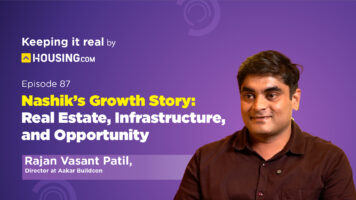Amid torrential rainfall in Delhi, the roof of Terminal-1, Indira Gandhi International Airport, collapsed on June 28, 2024, killing one person and injuring eight. Moreover, the poor drainage system, and low airport elevation at Terminal-3, resulted in disrupting passenger movement and airport operations, resulting in losses. This is not an isolated case. In the past year, India has faced several infrastructure failures, including the roof collapse at Jabalpur airport, cracks appearing in the newly inaugurated Atal Setu Bridge in Mumbai, collapse of the newly built infrastructure and inundation of streets following pre-monsoon rain in Ayodhya, and multiple bridge collapses in Bihar. These incidents underscore the longstanding concern about the infrastructure, raising questions about the quality, and necessitating discussion on making Indian cities more resilient for climate change and natural disasters.
Transformative Potential of Digital Twin Technology
While the idea of resilient and sustainable infrastructure is good to talk about; its overall execution requires a dynamic approach – more of technological approach. In the contemporary infrastructure landscape of India, technologies, such as geospatial, integrated building information modelling, and in particular, Digital Twin technologies are key for building world-class infrastructure the country needs to meet the demand of 140 Crore people. The potential of Digital Twin technology to transform infrastructure management is immense, driving increased investment and economic growth, as proved by its anticipated impact on India’s infrastructure and economy by 2047.
Advantages of Digital Twin Technologies
A Digital Twin of an asset is a fit-for-purpose and intelligent virtual representation synchronized at specific frequencies. It encompasses a connection between the virtual and physical twin, either existing or planned, enabling analysis and the capability to actuate physical changes. By integrating real-time and historical data, Digital Twins offer a holistic view, enhancing decision-making, supporting risk management, reducing costs through predictive maintenance, improving operational efficiency, and ensuring long-term infrastructure sustainability. During the construction phase, Digital Twin technologies can streamline workflows, increasing production output by 10% and reducing asset management downtime by 30%.
Enhanced Infrastructure Design and Risk Management through Digital Twins
Through effective visualization, Digital Twin simulations allow for the refinement of infrastructure designs, identifying and addressing potential vulnerabilities before construction begins. When combined with geospatial data, Digital Twins provide a comprehensive, real-time view of the infrastructure asset, enabling proactive management. This approach ensures that designs are robust and capable of withstanding extreme weather events, thereby preventing disasters like the collapse of the Delhi airport roof. Realistic 3D Digital Twin simulations enable stakeholders to assess risks and make informed decisions far beyond the capabilities of traditional technical drawings. This comprehensive analysis ensures that all potential risks are considered and mitigated, leading to more resilient infrastructure designs.
Predictive Maintenance and Real-Time Hazard Monitoring with Digital Twins
Digital Twins can predict equipment failures using data analytics, enabling proactive maintenance that extends the lifespan and resilience of infrastructure. Further, the devastating urban floods in cities like Mumbai and Chennai, which caused immense property damage and displaced thousands, underscore the need for real-time hazard monitoring. For instance, in Singapore, the use of Digital Twin for its nation (referred to as Virtual Singapore) includes detailed hydrodynamic models that simulate water movement and accumulation during heavy rainfall. This comprehensive model assists in urban planning and flood risk assessment, allowing authorities to visualize potential flood scenarios and optimize the design of drainage system, thereby enhancing resilience against climate-related challenges.
Mitigating Socio-Economic Losses through Digital Twin Deployment
In the context of recent infrastructure mishaps in India, such as the collapse of bridges and urban flooding, Digital Twins could have significantly mitigated socio-economic losses. For example, the Morbi bridge collapse in Gujarat resulted in over 140 fatalities and substantial economic losses. Had Digital Twin technology been deployed, continuous monitoring and predictive analytics could have identified structural weaknesses and potential failure points, prompting timely maintenance and averting the tragedy. For example, the Golden Gate Bridge, in San Francisco, wherein authorities have utilized Digital Twin technology to monitor the bridge’s structural health. Sensors placed on various parts of the bridge, feed data into a Digital Twin, which then uses this information to predict wear and tear, stress points, and potential maintenance needs. This predictive maintenance tool helps in scheduling repairs before actual problems occur, thus extending the bridge’s lifespan and ensuring safety.
Effective Disaster Communication and Preparedness via 3D and 4D Visualizations
Integrating innovative 3D or 4D (3D plus time) visualization in Digital Twins allows for more effective communication of disaster risks and preparedness to stakeholders. The Helsinki 3D+ City model in Finland, for instance, exemplifies the integration of 3D and 4D visualizations within a Digital Twin to enhance disaster management. This advanced virtual model incorporates geographical, infrastructural, and real-time data, allowing for the dynamic simulation of disaster scenarios over time. By enabling precise flood risk and heatwave simulations, the model facilitates effective communication and coordination among city planners, emergency services, and public. This approach not only improves disaster preparedness but also ensures a unified response during emergencies.
Global Examples of Digital Twin Technology Enhancing Disaster Resilience
Several cities across the world are already leveraging Digital Twin technology to enhance their disaster resilience. Virtual Singapore is a 3D platform that integrates data about Singapore’s infrastructure with information on demographics, population movement, climate, and other factors. The government used Virtual Singapore to simulate an incident in a sports stadium to formulate an optimal evacuation plan. The UK and the Germany are building a national digital twin — an interconnected system of digitally modelled cities, a goal outlined for India to achieve by 2035 under the National Geospatial Policy 2022 [NGP-2022]. This allows for scenario planning and simulation of disaster events across the country, coordinated emergency response by sharing real-time data and insights across jurisdictions, and proactive maintenance and upgrades to critical infrastructure.
Shenzhen is developing a “cognitive” city Digital Twin that integrates real-time data from sensors across the city. This enables predictive analytics to anticipate and mitigate the impact of natural disasters, automated adjustments to infrastructure operations to enhance resilience, and rapid damage assessments and targeted recovery efforts post-disaster. Thailand is investing in a National Geospatial Knowledge Infrastructure, making geospatial data widely accessible. This lays the foundation for developing comprehensive Digital Twins of Thai cities and infrastructure, leveraging geospatial analytics and simulations for disaster preparedness and response, and fostering an ecosystem of geospatial innovation for sustainable and resilient development.
The value of adopting Digital Twins in the Indian context is evident from their potential to mitigate future infrastructure failures. By providing detailed simulations integrated with real-time data, Digital Twins can help prevent incidents like the roof collapse at the Delhi airport. These technologies enable proactive maintenance and early detection of vulnerabilities, ensuring the safety and integrity of critical infrastructure.
Need for National Digital Twin Policy in India
As we, as a nation, strive to achieve ‘Sustainability of Everything‘, the application of advanced technologies like Digital Twin becomes essential. Digital Twin technology plays a pivotal role in building resilient, sustainable, and safe infrastructure. By adopting a proactive, data-driven approach, Digital Twins enable cities and infrastructure owners to enhance disaster preparedness, minimize disruptions, and ensure the long-term resilience of critical systems in the face of natural and human-made disasters.
Given the monumental infrastructure demands of our country, a National Digital Twin Policy is imperative. This policy will set a new standard of excellence in infrastructure development and management, ensuring that our national infrastructure meets the highest standards of resilience and sustainability. Together, we can pave the way for a future where resilient infrastructure, safe cities, and sustainable progress are the cornerstones of the national development.
—The author is the chief executive officer at Geospatial World.
| Got any questions or point of view on our article? We would love to hear from you. Write to our Editor-in-Chief Jhumur Ghosh at jhumur.ghosh1@housing.com |






